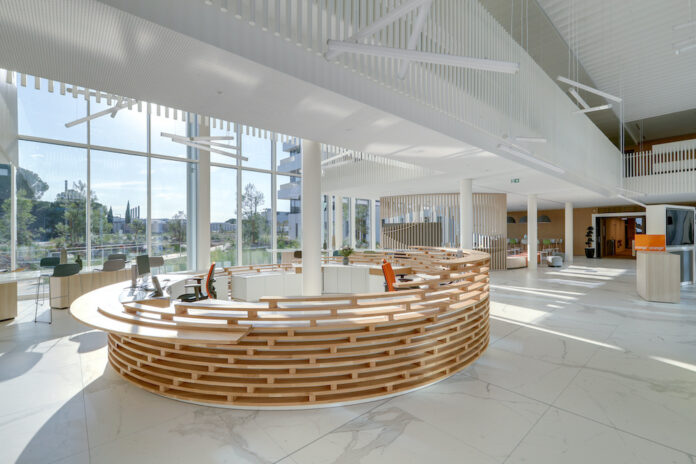
New Orange HQ is on fertile LAN suited to fast growth
Nokia is to install passive optical local area networks (POLs) in 20 different Orange 20 sites across France, the mobile operators new Orange Group Headquarters, Bridge, in Issy-les-Moulineaux near Paris. The POL system replaces the existing copper LAN, connecting more than 5,000 end points with options including Wi-Fi and hard-wired terminals.
Public servants
Passive Optical LANs help public and private sector organisations keep pace with evolving service demands created by unforeseen crises such as the Covid outbreak, lockdowns, pharmaceuticals dispersal and the collapse of the logistics support offered to the road, rail and air cargo freight hauliers supporting agriculture and international trade.
Supplies element
The other component of the national supply chain, the people who man businesses, governments, airports, logistics, manufacturing, hotel and research institutes, need to keep a handle on costs while demanding more from their communications infrastructure. All the while, there has been a drift in the workforce, with more people working at home. In the UK entire departments of civil servants, such as those who scan documents for the Department Work and Pensions, refused to attend at their workplace. In the case of the French supply chain, Orange France is cutting costs by deploying one simple network, with the help of Nokia, which is adding capacity to boost business performance and improve mobile connectivity for all users.
High campus
Nokia claims its POL helps Orange improve user experiences and saves energy when running in-building and campus connectivity functions. The fibre system is a better long-term as it can easily and cheaply be upgraded when speeds increases. The network is secured with built-in encryption and central control. All the intelligence of the network resides in the optical line terminal and there is nothing at the user end-points that can be exploited.
Domain
“Moving to POL for our intra office connectivity can save significant energy costs and reduce emissions which is essential to help Orange meet its ambitious environmental goals,” said Philippe Gacougnolle, Orange France’s Director of the Internal Network Domain. Switching from traditional LANs to POL technology means a more compact solution, with less energy consumption and much better performance, said Stephane Azoulay, Nokia Head of Orange France Account.


